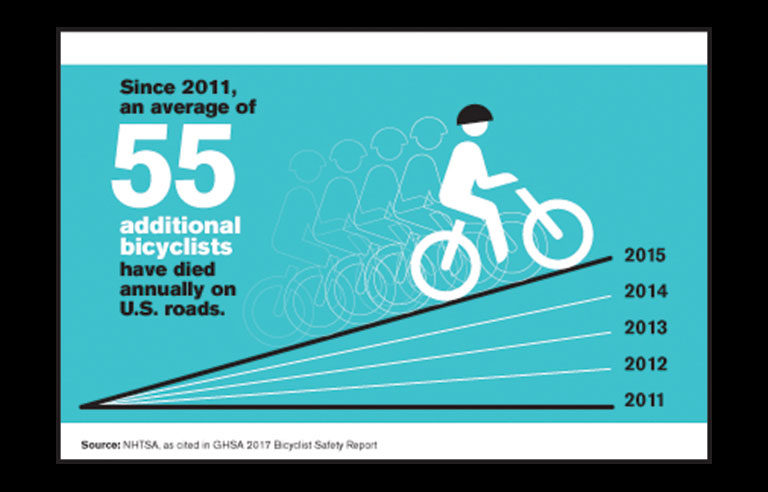Bicyclist deaths on the rise: report

Washington – Bicyclists deaths increased 12.2 percent in 2015, the largest percentage jump among all roadway user groups that year, according to a new report from the Governors Highway Safety Association.
GHSA reviewed data from the Fatality Analysis Report System from 1975 to 2015. It found that bicyclist fatalities have been climbing since 2010. In 2015 – the most recent year for which data was available – 818 cyclists were killed, a 12.2 percent increase from 2014 and the largest rise in two decades.
Other findings:
- Adults accounted for 88 percent of bicyclist-vs.-vehicle deaths, with 45 being the average age.
- Males were almost six times more likely to be killed than females.
- 7 out of 10 deaths occurred in urban areas.
- One-third of fatalities happened at intersections. Common causes involved motorists or bicyclists failing to yield the right of way and motorists turning left or right into the path of a bicyclist.
- 54 percent of the bicyclists killed in 2015 were not wearing helmets.
The researchers called for states and localities to refine crash reports to improve the accuracy of the data collected – one of 30 recommendations GHSA makes to state highway safety offices in the report. Others recommendations:
- Partner with businesses and bicycle, community and civic groups to promote rider and driver alertness and stress the importance of giving bikers space.
- Poll cyclists to gather their education and training needs.
- Establish a dedicated funding source for bicycle safety initiatives.
“State highway safety agencies are tasked with addressing road user behavior through public awareness, so they are uniquely positioned to educate people about the safety benefits of engineering improvements and build support for better roadway design,” GHSA Executive Director Jonathan Adkins said in an Aug. 24 press release. “While engineering solutions are vital, states and communities cannot solely build their way out of the problem. These changes should be accompanied by education and enforcement to be most effective.”
Post a comment to this article
Safety+Health welcomes comments that promote respectful dialogue. Please stay on topic. Comments that contain personal attacks, profanity or abusive language – or those aggressively promoting products or services – will be removed. We reserve the right to determine which comments violate our comment policy. (Anonymous comments are welcome; merely skip the “name” field in the comment box. An email address is required but will not be included with your comment.)

